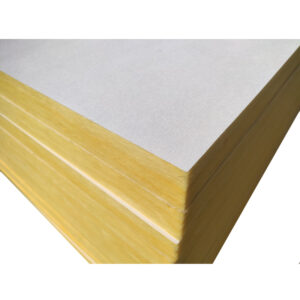Introduction
Acoustic ceilings play a vital role in sound control and noise reduction in buildings. The construction materials industry offers a wide range of acoustic ceiling materials, each with its unique properties and benefits. In this article, we will explore the different types of acoustic ceiling materials available, their characteristics, and their suitability for various applications. Understanding these options will help architects, designers, and builders make informed decisions when it comes to selecting the right acoustic ceiling material for their projects.
Mineral Fiber Ceilings
Mineral fiber ceilings are one of the most commonly used acoustic ceiling materials. They are made from a combination of mineral wool fibers, binders, and fillers. These ceilings offer excellent sound absorption properties, effectively reducing echo and reverberation. Mineral fiber ceilings are lightweight, durable, and fire-resistant, making them suitable for a wide range of applications, including offices, schools, hospitals, and commercial spaces.
Gypsum Ceilings
Gypsum ceilings are another popular choice for acoustic applications. They are made from gypsum boards or panels that are specially designed to enhance sound control. Gypsum ceilings offer good sound absorption capabilities and can help create a quieter and more comfortable environment. They are easy to install and can be finished with various textures and patterns, allowing for aesthetic customization. Gypsum ceilings are commonly used in residential, commercial, and institutional buildings.
Metal Ceilings
Metal ceilings are known for their durability and sleek appearance. They are typically made from aluminum or steel and are available in a range of designs and finishes. While metal ceilings may not offer the same level of sound absorption as other materials, they can be combined with acoustic insulation to enhance their acoustic performance. Metal ceilings are commonly used in modern and contemporary spaces, such as airports, train stations, and commercial buildings, where aesthetics and durability are key considerations.
Wood Fiber Ceilings
Wood fiber ceilings provide a natural and warm aesthetic while offering acoustic benefits. These ceilings are made from wood fibers mixed with binders and additives. Wood fiber ceilings have good sound absorption properties and can help reduce noise levels. They are commonly used in residential settings, restaurants, theaters, and other spaces where a warm and inviting atmosphere is desired.
PVC Ceilings
PVC (Polyvinyl Chloride) ceilings are a versatile option for acoustic applications. They are made from PVC materials and are available in various designs, colors, and patterns. PVC ceilings offer good sound absorption capabilities and are resistant to moisture and humidity, making them suitable for areas with high humidity levels, such as swimming pools, bathrooms, and commercial kitchens.
Conclusion
The construction materials industry offers a range of acoustic ceiling materials to cater to different project requirements and design aesthetics. Mineral fiber ceilings, gypsum ceilings, metal ceilings, wood fiber ceilings, and PVC ceilings are among the common options available. Each material has its unique properties, including sound absorption capabilities, durability, aesthetics, and moisture resistance. Understanding the characteristics and suitability of these materials will assist architects, designers, and builders in selecting the appropriate acoustic ceiling material that best meets the acoustic and aesthetic goals of their projects.



